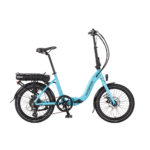The following is FOR INFORMATION ONLY It will give you some idea of what is being talked about world wide regarding Lithium Batteries.
Some of these may well become part of regulations from 2014-2016
NF.41 – PRBA informed the Sub-Committee about the Informal Working Group on large lithium batteries that they will host in Washington DC October 2-4, 2013.
ST/SG/AC.10/C.3/2013/14 – Germany proposed adding a new entry in the dangerous goods list for batteries that contain lithium with a solid electrolyte that must be heated to cause a reaction which releases the energy “THERMAL BATTERIES or THERMAL BATTERIES CONTAINED IN EQUIPMENT”. Germany received a number of comments and agreed to submit a revised proposal for a future session.
ST/SG/AC.10/C.3/2013/13 and INF.23 – Germany proposed to amend the wording in Special provision 188 and in the first sentence of the definition in 38.3.2.3 in the Manual of Tests and Criteria to recognize that new battery technologies include lithium in either the anode or the cathode where the current regulations only address the anode. In INF.23, Austria indicated that depending on the charging cycle, the anode may become the cathode in a reverse cycling and suggested that no amendment was necessary. Austria suggested replacing the word anode with “negative electrode”. Based on the discussion, Germany agreed to withdraw their document and possibly submit a revised proposal.
ST/SG/AC.10/C.3/2013/34 – Japan proposed to provide a transitional time frame for marking the Watt-hour rating on electric double layer and asymmetric capacitors. Japan received many comments on the proposed wording and the Secretariat proposed improved text which was subsequently adopted.
ST/SG/AC.10/C.3/2013/35 – PRBA proposed eliminating the documentation requirements for lithium batteries covered under SP188. The U.S. opposed the proposal and suggested modernising the hazard communication for instance incorporating the ICAO TI lithium battery handling label. The majority of experts opposed the proposal while the majority of industry representatives supported the PRBA proposal. DGTA pointed out the documentation requirements of SP188 has led to significant confusion and that it was not being applied consistently. PRBA withdrew the paper.
ST/SG/AC.10/C.3/2013/26 – ICAO highlighted the fact that the hazard communication for lithium batteries is less than perfect. The paper posed a number of questions to the sub-Committee:
§ Is classification of some articles to Class 9 appropriate? If yes, what is the rationale behind this assignment, keeping in mind the explanatory material in the Guiding Principles given above?
§ If Class 9 is not the most appropriate classification, should consideration be given to new divisions in that class or a new class?
§ Is better hazard communication an issue, given that there is no appropriate class/division available to reflect the intrinsically hazardous properties e.g. potential thermal runaway, short circuit, state of charge, electrical properties, dual electrical and chemical properties? If yes, what pictograms/colours would be appropriate to communicate the “different” hazard – the standard “electric shock risk” symbol? Could the “electric shock risk” symbol be incorporated into a new hazard label for those articles identified as possessing the hazard? (either for a new class or division or for those entries identified by UN number)
§ Do the current labelling/marking requirements need improvement in order to ensure effective and appropriate hazard communication is given to emergency responders and personnel/organizations involved in the transport/handling of dangerous goods?
§ Should the risks take into account the size, quantities and, where appropriate, the energy densities of the particular articles being moved in transport?
The majority of experts did not support creating a new hazard class for lithium batteries but were supportive of enhancing hazard communication and recognised that the current Class 9 label is not a very effective means of communicating the hazards associated with lithium batteries. Many welcomed incorporating the lithium battery handling label from the ICAO TI in the Model Regulations and some suggested that it should be required in addition to the Class 9 label for fully regulated lithium batteries. DGTA cautioned the Sub-Committee against making significant changes because many companies and transport workers were already struggling with the many changes recently introduced by ICAO but welcomed incorporating the lithium battery handling label in the Model Regulations. The ICAO Chairman suggested that creating a separate division in Class 9 for lithium batteries would facilitate being able to apply segregation requirements for lithium batteries so that they could be separated or segregated from other hazardous materials such as flammable liquids, oxidisers, explosives, etc. The ICAO Secretariat indicated that she would inform the ICAO Dangerous Goods Panel of the discussion and asked the sub-committee how to proceed with suggestions made by various experts such as considering separate divisions in Class 9. The Chairman of the Sub-Committee explained that the issue really needs experts to step up to take the lead to propose amendments otherwise progress can’t be introduced. He encouraged experts to submit appropriate proposals for the next session.
BEBA DGSA
Some of these may well become part of regulations from 2014-2016
NF.41 – PRBA informed the Sub-Committee about the Informal Working Group on large lithium batteries that they will host in Washington DC October 2-4, 2013.
ST/SG/AC.10/C.3/2013/14 – Germany proposed adding a new entry in the dangerous goods list for batteries that contain lithium with a solid electrolyte that must be heated to cause a reaction which releases the energy “THERMAL BATTERIES or THERMAL BATTERIES CONTAINED IN EQUIPMENT”. Germany received a number of comments and agreed to submit a revised proposal for a future session.
ST/SG/AC.10/C.3/2013/13 and INF.23 – Germany proposed to amend the wording in Special provision 188 and in the first sentence of the definition in 38.3.2.3 in the Manual of Tests and Criteria to recognize that new battery technologies include lithium in either the anode or the cathode where the current regulations only address the anode. In INF.23, Austria indicated that depending on the charging cycle, the anode may become the cathode in a reverse cycling and suggested that no amendment was necessary. Austria suggested replacing the word anode with “negative electrode”. Based on the discussion, Germany agreed to withdraw their document and possibly submit a revised proposal.
ST/SG/AC.10/C.3/2013/34 – Japan proposed to provide a transitional time frame for marking the Watt-hour rating on electric double layer and asymmetric capacitors. Japan received many comments on the proposed wording and the Secretariat proposed improved text which was subsequently adopted.
ST/SG/AC.10/C.3/2013/35 – PRBA proposed eliminating the documentation requirements for lithium batteries covered under SP188. The U.S. opposed the proposal and suggested modernising the hazard communication for instance incorporating the ICAO TI lithium battery handling label. The majority of experts opposed the proposal while the majority of industry representatives supported the PRBA proposal. DGTA pointed out the documentation requirements of SP188 has led to significant confusion and that it was not being applied consistently. PRBA withdrew the paper.
ST/SG/AC.10/C.3/2013/26 – ICAO highlighted the fact that the hazard communication for lithium batteries is less than perfect. The paper posed a number of questions to the sub-Committee:
§ Is classification of some articles to Class 9 appropriate? If yes, what is the rationale behind this assignment, keeping in mind the explanatory material in the Guiding Principles given above?
§ If Class 9 is not the most appropriate classification, should consideration be given to new divisions in that class or a new class?
§ Is better hazard communication an issue, given that there is no appropriate class/division available to reflect the intrinsically hazardous properties e.g. potential thermal runaway, short circuit, state of charge, electrical properties, dual electrical and chemical properties? If yes, what pictograms/colours would be appropriate to communicate the “different” hazard – the standard “electric shock risk” symbol? Could the “electric shock risk” symbol be incorporated into a new hazard label for those articles identified as possessing the hazard? (either for a new class or division or for those entries identified by UN number)
§ Do the current labelling/marking requirements need improvement in order to ensure effective and appropriate hazard communication is given to emergency responders and personnel/organizations involved in the transport/handling of dangerous goods?
§ Should the risks take into account the size, quantities and, where appropriate, the energy densities of the particular articles being moved in transport?
The majority of experts did not support creating a new hazard class for lithium batteries but were supportive of enhancing hazard communication and recognised that the current Class 9 label is not a very effective means of communicating the hazards associated with lithium batteries. Many welcomed incorporating the lithium battery handling label from the ICAO TI in the Model Regulations and some suggested that it should be required in addition to the Class 9 label for fully regulated lithium batteries. DGTA cautioned the Sub-Committee against making significant changes because many companies and transport workers were already struggling with the many changes recently introduced by ICAO but welcomed incorporating the lithium battery handling label in the Model Regulations. The ICAO Chairman suggested that creating a separate division in Class 9 for lithium batteries would facilitate being able to apply segregation requirements for lithium batteries so that they could be separated or segregated from other hazardous materials such as flammable liquids, oxidisers, explosives, etc. The ICAO Secretariat indicated that she would inform the ICAO Dangerous Goods Panel of the discussion and asked the sub-committee how to proceed with suggestions made by various experts such as considering separate divisions in Class 9. The Chairman of the Sub-Committee explained that the issue really needs experts to step up to take the lead to propose amendments otherwise progress can’t be introduced. He encouraged experts to submit appropriate proposals for the next session.
BEBA DGSA






